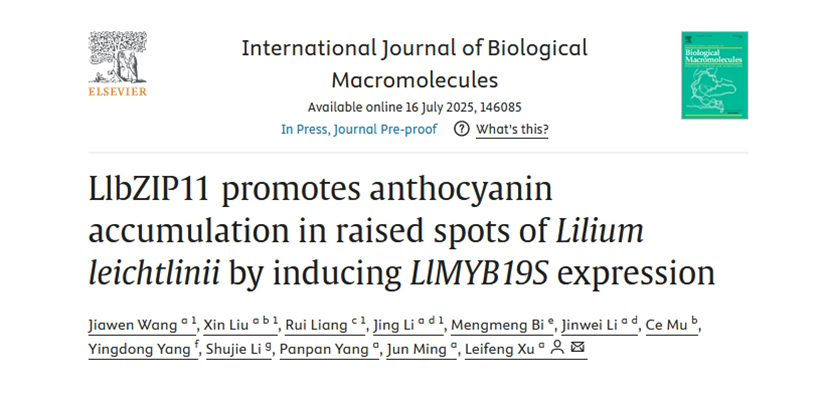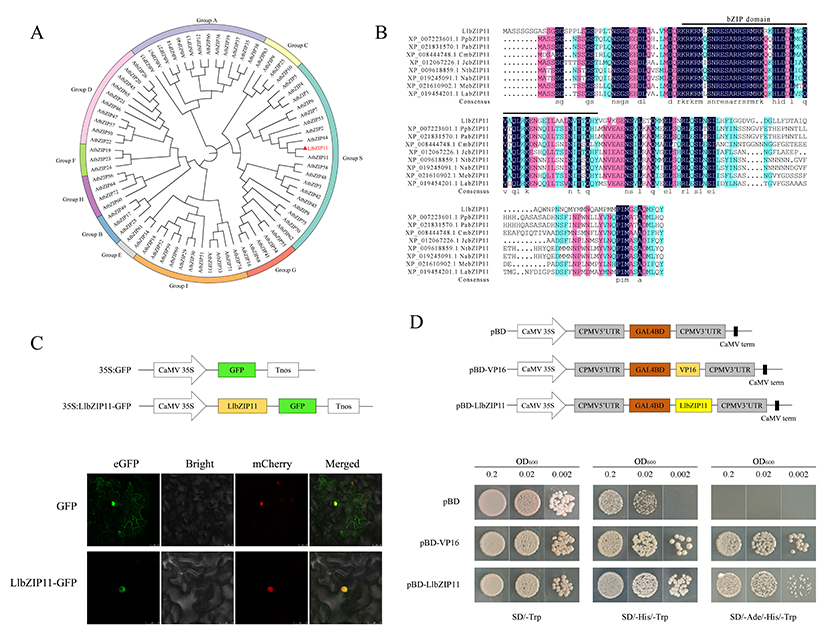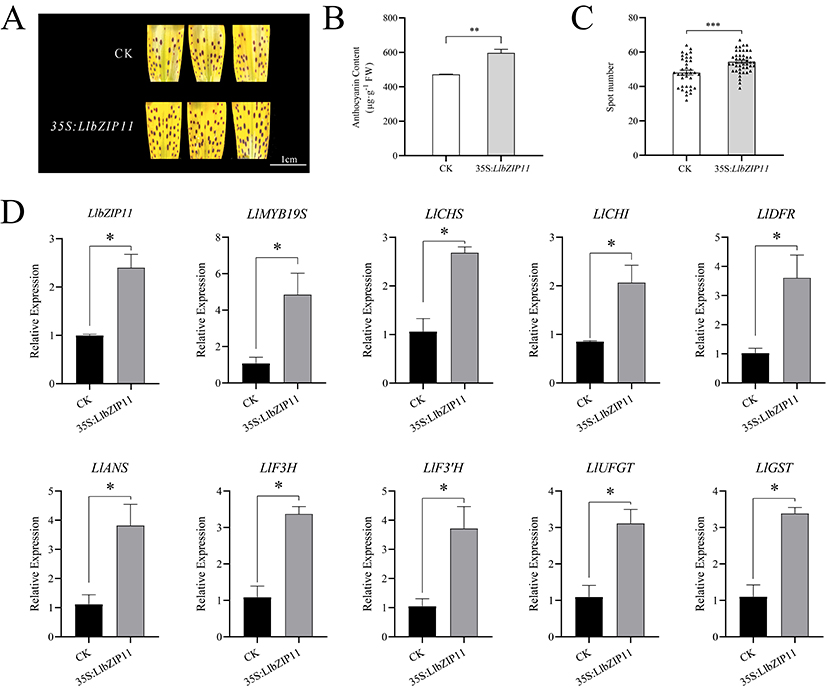Recently, the lily breeding team of the Institute of Vegetables and Flowers of the Chinese Academy of Agricultural Sciences (CAAS) has published a research paper titled "LlbZIP11 promotes anthocyanin accumulation in raised spots of Lilium leichtlinii by inducing LlMYB19S expression" in the international journal International Journal of Biological Macromolecules (IF=8.5). This study systematically deciphered the key regulatory network of anthocyanin biosynthesis during the formation of raised spots on lily tepals, providing an important theoretical foundation and technical support for molecular breeding of lily flower color.

Lilies (Lilium spp.) are globally significant ornamental flowers, widely cherished in cut flowers, potted plants, and landscape gardening due to their rich color variations and diverse floral patterns. Among them, Asiatic lilies have become a research hotspot because of their unique and abundant coloration types, particularly the raised spots on tepals, which add distinctive ornamental value. These spots result from the accumulation of anthocyanins in specific epidermal and parenchyma cells, but their molecular regulatory mechanisms remain unclear.
Anthocyanins are a class of water-soluble pigments responsible for red, purple, and blue hues in plant tissues. In plants, anthocyanin biosynthesis is co-regulated by structural genes and transcription factors. Among them, the MYB-bHLH-WD40 (MBW) complex serves as the core regulatory module, while other transcription factors (e.g., bZIP, NAC, WRKY) also participate in the regulation across different species.
In lilies, the R2R3-MYB transcription factor MYB19S has been shown to be involved in anthocyanin accumulation in raised spots, but its regulatory mechanism had not been elucidated. This study, using Lilium leichtlinii as the material, combined transcriptome analysis and molecular biology experiments to reveal that the bZIP transcription factor LlbZIP11 directly bound to the promoter of LlMYB19S, activating its transcription and thereby regulating spot coloration. This discovery not only enriches the understanding of lily color regulation but also provides a theoretical basis for molecular breeding of lily flower colors.

Figure 1 Phenotypes of Lilium leichtlinii at seven developmental stages.

Figure 2 Characterization of the transcription factor LlbZIP11.

Figure 3 Functional analysis of LlbZIP11.
The first authors of this study include Wang Jiawen, Liu Xin, Liang Rui, and Li Jing. Corresponding author is Associate Researcher Xu Leifeng. The study was conducted at the State Key Laboratory of Vegetable Biobreeding, Key Laboratory of Biology and Genetic Improvement of Flower Crops, Ministry of Agriculture and Rural Affairs, Institute of Vegetables and Flowers, Chinese Academy of Agricultural Sciences, and was supported by by the National Key R&D Program of China (2023YFD1200105) and the National Natural Science Foundation of China (32172624).
Link: https://www.sciencedirect.com/science/article/abs/pii/S0141813025066425